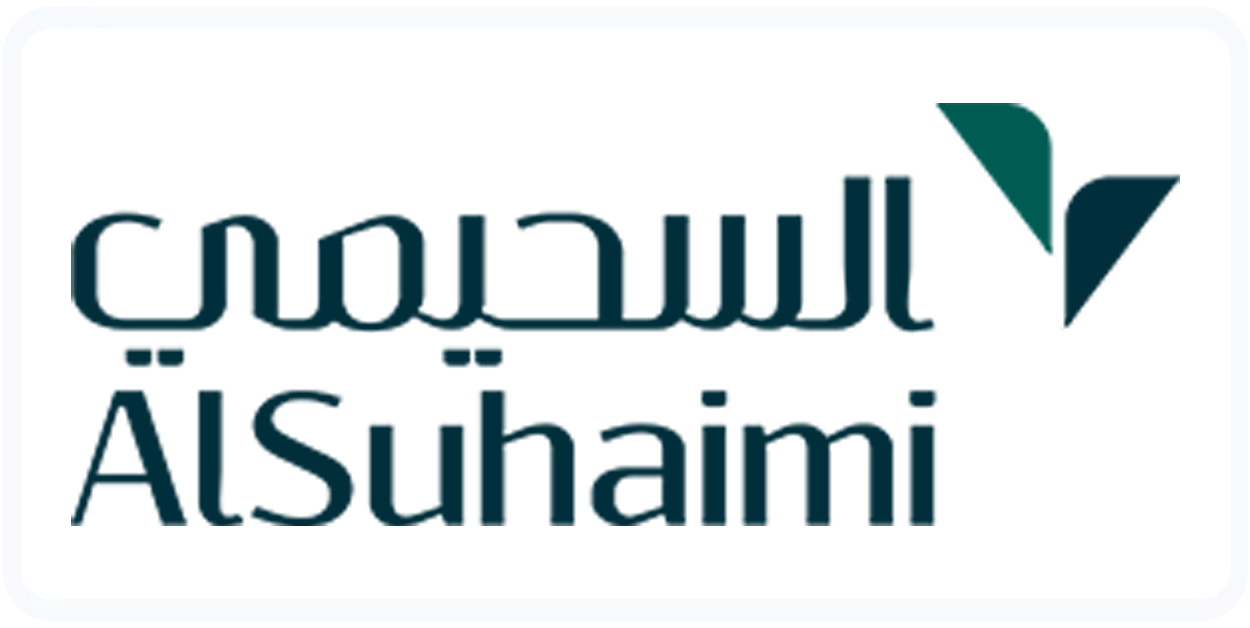Saudi Arabia has rapidly made its FinTech sector grow and turn into one of the fastest-growing industries within just five short years. The country enjoys a booming population of tech-savvy, and smartphone-ready young people (almost 70% are under 35) as well as extensive internet penetration. The above factors together make the industry of fintech bloom and foster new financial solutions designed to cater to ever-changing consumer needs. In this transformation, Saudi Arabia’s Vision 2030 is crucial and plays a key role in creating the right ecosystem to bring many fintech companies globally with its regulatory reforms. However, with the steps that have been taken lies some challenges for KSA to earn a spot as one of the leading fintech hubs internationally.
As an industry player with high expertise in the Saudi Arabian business landscape, Analytix through this blog, will help you explore the progress being made by Saudi in which milestones are achieved and emerging fintech services while focusing on strategic priority areas that must be taken to avoid missteps and ensure future growth.
The Journey of the Fintech Sector in Saudi Arabia
The fintech sector in Saudi Arabia has dramatically grown and changed over the past five years. It all began in April 2018, with an initiative by the Saudi Arabian Monetary Authority (SAMA) and the Saudi Capital Market Authority (CMA) moving to open the launch of Fintech Saudi. This initiative was taken so that Saudi Arabia would be at the top of its game in the MENA region of being a fintech hub with a supportive ecosystem for innovation and growth in this particular sector. Major drivers for this growth include the Accelerator program, Career Fair, Fintech Tour, and Summer Sessions by Fintech Saudi. Since its inception, the number of FinTech companies in Saudi Arabia has grown twentyfold, with more than SAR 4 billion (nearly US $1 billion) invested in the sector, and over 100,000 participants in events and training related to this area.
The national Fintech strategy was approved in May 2022 as part of the ambitious Vision 2030. The strategy addresses six critical pillars such as making Saudi Arabia the regional hub for Fintech in the Middle East, creating a conducive regulatory environment to facilitate growth and innovation, funding for start-ups, building skills, and upscaling training, speeding up the support infrastructure, and creating local and international collaboration. The Vision 2030 plan lays down ambitious objectives, including that at least 525 fintech companies become established, creating 18,000 fintech jobs with a contribution of SAR 13.3 billion to the GDP and achieving SAR 12.2 billion in net venture capital contributions by 2030.
This has led to the number of firms in this fintech sector in KSA growing from 89 in 2022 to over 200 in 2023. More convenient systems of payments, alternative financing platforms including debt crowd funding, and improved servicing integration through the aggregation of platforms were among the key developments in the 2022 SAMA Annual Fintech Report. This was a result of a number of initiatives including:
Fintech Saudi
The establishment of Fintech Saudi has been a change enabler that offered programs like the Fintech Accelerator, the Fintech Saudi Innovation Hub, an online fintech directory, and several flagship events that have all been crucial in this growth. This was complemented by regulatory enhancements developed in collaboration with SAMA.
Fintech Sandbox
Testing in controlled live environments had been allowed to prove the different innovations in fintech under SAMA’s sandbox program, making their transition into the open relatively easy.
Funding to Startups
Initiating reduction of other subsidies, including that of defense, and replacing the same with various means of financial support has been done. The newest is SVC—Saudi Venture Capital Company— lately announcing a SAR 300 million fund for fintech startups while eyeing an extra SAR 6 billion investment in startups and SMEs from other sectors. Thus far, SVC’s investment is in 35 VC funds, which have further enabled more than 900 transactions and SAR 1.9 billion in investments. The Saudi National Technology Development Program has also rolled out other initiatives, including the Technology Development Financing initiative, to support these startups with debt funding.
These strategic initiatives, policies that act as support, and a vibrant ecosystem have given an impetus to the continued growth of the fintech sector in Saudi Arabia. With the kingdom pushing toward its Vision 2030 goals, so is the role the fintech industry is about to play in deciding what the future of financial services would look like.
It can be added that impressive statistics drive the growth of the fintech sector:
Quick growth of firms in Fintech: The number of firms in the Fintech sector has increased to over 200 by August of 2023 from 89 in 2022, marking a 300% increase since 2021.
Revenue growth: The sector generated approximately 746.4 million in revenues in 2022.
Growing Investments: Fintech startups in the MENAP region increased their investments from 200 million in 2020 to approximately 704 million in 2023.
Promising Future Outlook: MENAP fintech revenue is rated to hit as much as $3.5 billion to $4.5 billion by 2025.
Goals for Foreign Direct Investment: The blueprint that Saudi Arabia has set includes boosting its FDI to 20% in the benchmark, pegged at $3.2 billion by 2030.
What is the future of fintech in Saudi Arabia?
The future of Fintech in Saudi Arabia will be bright in its innovative startups and other strategic initiatives in conformity with its Vision 2030. From 2021 to 2023, leading fingerprints across the investment scene were left by firms like Lean Technologies, Mod5r, Tamara, EdfaPay, Cashin, and Lendo. Altogether, the above-named firms have generated more than $740 million in revenue in 2022. In addition, until December 2022, SAMA granted and licensed another 89 FinTechs, which in itself goes on to underscore that the sector was expanding at a fast pace.
The ambition of Saudi Arabia to become a regional financial hub by 2030 echoes the dreams of great deeds. The important targets include increasing the share of non-cash transactions to 70% by 2025. Further, by the year 2030, the fintech sector should have 525 active fintech companies, contribute about 13 billion riyals to the GDP, and have created 18,000 direct jobs. Coupled with these comprehensive strategies, the market will record appreciable growth.
Of equal importance, and indeed forming a key part of this fintech sector, is the InsurTech segment which has also seen manifold growth through this digital transformation and innovation. While democracy might not ring a bell, their success in Dubai precedes them, and they are now expanding into the Kingdom thanks to investment from Wa’ed Ventures. This will be possible through the regulatory framework created by Riyadh’s Central Bank, SAMA, which has recently promulgated far-reaching InsurTech regulations to enable this growth.
As Saudi Arabia pushes forward with its ambitious ‘Vision 2030’ agenda, heavily invested in digital innovation, the opportunities that exist within the fintech and InsurTech sectors are only growing. Such has been the strategic approach adopted, with supportive policies and a vibrant ecosystem that now it indeed seems the Kingdom is on its way to becoming one of the world’s leading fintech hubs shaping the future of financial services in the region.
Key Progress Areas of Saudi Arabia's Fintech Sector
Let us identify the key progress areas that have been instrumental in catalyzing rapid growth and development within the fintech sector of Saudi Arabia. Progress in digital payments, alternative financing, and financial product aggregation capture the country’s move toward being a global fintech hub.
Digital Payments
Saudi Arabia is efficiently undertaking an evolutionary change to limit its dependence on hard cash. One of the cornerstones of this shift is the Financial Sector Development Program, which has introduced new players into this financial services landscape. Vision 2030 targets an increase in the non-cash transaction share to 80% by 2030, from 18% in 2016. Non-cash payments represented 62% of all transactions in 2021, far in front of schedule. Key developments include digital wallets, local transfers, QR code payments, and SADAD system bill payments.
Exponential Growth: Beginning from approximately 315,000 wallets in the year 2018 to over 17 million in 2022, that’s more than half of Saudi Arabia’s population.
Top-Up Methods: While in 2018, 70% of wallet top-ups were through bank transfer, the number changed drastically when it was at 80% wallet recharge in 2022 from debit or credit cards.
International Transfers: Digital wallets are increasingly used by expatriates. Non-Saudi users surge to 45% in 2022 from 17% in 2018.
Market Leaders: STC pay, Saudi Arabia’s first fintech unicorn, composes the market share accompanied by urpay from Al Rajhi Bank. STC pay has reportedly shown a 25% year-on-year increase in profit for 2022.
Alternative Financing
The alternative financing sector has been the second-largest fintech subsector in the kingdom, with BNPL and debt crowd funding driving the growth.
BNPL adoption: The number of buyer acceptance merchants that enable BNPL increased from 780 in 2020 to more than 30,000 in 2022, growing from 76,000 customer accounts in 2020 to more than 10 million, according to Statistics.
BNPL consumers: Almost 45% of the BNPL users were in the age group 20-30. Major players in the field, including Tabby and Tamara, have achieved unicorn status.
Debt crowd funding: It has become a very vital channel for SMEs financing, digitizing, and raising funds in an expeditious and light-touch manner. Its investor base has grown from 302 in 2019 to more than 92,000 in 2022, having funded over 1,800 loans above SAR 1.1 billion since 2019.
Although the sector is growing in various aspects, some hindrances are still evident:
Interest Rates: The rates for this increased from 10% in 2019 to more than 16% in 2022.
Approval Rates: Varying, falling as low as 48% in 2021 before recovering to around 66% in 2022.
Loan Tenure and Credit Terms: Loan tenures stretch from three to 11 months, while the average invoice credit terms get cut short from 80 to 48 days.
Exponential Growth: Beginning from approximately 315,000 wallets in the year 2018 to over 17 million in 2022, that’s more than half of Saudi Arabia’s population.
Top-Up Methods: While in 2018, 70% of wallet top-ups were through bank transfer, the number changed drastically when it was at 80% wallet recharge in 2022 from debit or credit cards.
International Transfers: Digital wallets are increasingly used by expatriates. Non-Saudi users surge to 45% in 2022 from 17% in 2018.
Market Leaders: STC pay, Saudi Arabia’s first fintech unicorn, composes the market share accompanied by urpay from Al Rajhi Bank. STC pay has reportedly shown a 25% year-on-year increase in profit for 2022.
Aggregation of Financial Products
Financial product aggregation channels act between both the consumer and the financial service provider, as this simplifies decision-making procedures.
Insurance Aggregation: Although insurance aggregation applications have only been downloaded by approximately 375,000 people, websites related to this sector received 20.1 million visits in 2022. Health insurance products represent 10%, and car insurance products represent 90% of the products. Policies issued via aggregators have surged from 662,000 in 2018 to 4.3 million in 2022, even as the value of policies issued surged from SAR 573 million in 2018 to SAR 4.2 billion in 2022.
Operational Efficiency: The policy issuance time was reduced from 836 seconds in the year 2018 to only 133 seconds in the year 2022.
There may be a higher contribution of aggregators of financial products and insurance towards an inclusive, more transparent, and more consumer-friendly financial system in the Kingdom of Saudi Arabia. There are at present eight companies within the pipeline at SAMA for licensing as financial services aggregator companies, of which four have received the initial approval and one among them is in the final stage of licensing.
Fintech Regulations in Saudi Arabia
The fintech sector in Saudi Arabia is overseen by two key regulators. The Saudi Central Bank (formerly known as the Saudi Arabian Monetary Authority or SAMA) and the Capital Market Authority (CMA). SAMA oversees banking, finance, insurance, credit bureaus, and payment activities. On top of that, it prohibits supervision over certain fintech activities pertaining to intelligent cash management and insurance aggregation. On the other hand, the CMA oversees capital market activities that pertain to dealing, arranging, managing, advising, and custody of securities.
Any fintech startup in Saudi Arabia should, therefore, seek to determine if their services fall within the regulated sphere of either SAMA or CMA. This can be identified from an exhaustive list of regulated activities available on the websites of the respective regulators. Not all fintech services may be subject to the need for immediate regulatory approval. The following are eight stand-alone fintech activities not requiring, at this point, regulatory approval:
- Aggregation of Publicly Available Financial Information
- Business Tools
- Back-office Bank Operations
- Bank Customer Experience
- Personal Management
- Regtech
- Gamification
- Reward-Based Crowdfunding
Of course, if a Fintech firm wants to perform any other regulated activities, then regulatory approval is more than likely required. In this structured and benign supervisory framework, innovation is encouraged but not at the cost of both consumer protection and market stability.
Analytix Helps You in Setting up Fintech Business in Saudi Arabia
Analytix is your on-ground partner to help you navigate the very dynamic and rapidly growing Saudi Arabia fintech sector. With a commitment to assisting businesses entering the Saudi market, we happen to be a leading business and management consultancy firm specializing in international business setup support in the Kingdom of Saudi Arabia. Our experienced team comprises highly professional experts in businesses who enable the establishment, incorporation, expansion, or even growth of your Fintech business within this thriving landscape.
With years of experience and in-depth knowledge of local regulations and market dynamics, Analytix provides comprehensive services well beyond business incorporation. These services range from accounting and bookkeeping to tax and auditing, GRO, and PRO services, among many others. We are committed to making sure that you realize success in Saudi Arabia’s fintech sector by ensuring you have the proper expertise and support to get there. Let us put your thoughts and ideas in Fintech into a practical reality topping it with sustainable growth. Get in touch with us now.
Conclusion
We’re glad you’re here!
Hopefully, you would have had a far better understanding of the Saudi Arabian fintech sector and the great opportunities it holds. From impressive growth to new developments, supportive regulatory drives in its midst, and a promising future, Saudi Arabia is indeed slowly transforming into one of the world’s finest fintech hubs.
If you feel we missed something, or if you mostly have questions, let us know in the comments.
Happy Reading!
- FAQs
Frequently Asked Questions
If your question is not addressed here, please feel free to reach out to us. We value your inquiry.
When was Fintech Saudi launched?
Fintech Saudi was launched in April 2018. It was championed by the Saudi Arabian Monetary Authority (SAMA) together with the Capital Market Authority (CMA), towards the development of the Kingdom’s Fintech industry and positioning Saudi Arabia as one of the region’s frontrunners in major fintech hubs within the Middle East and North Africa.
How big is the fintech market in Saudi Arabia?
The fintech market of Saudi Arabia has experienced astounding growth over the recent past. As of August 2023, the number of fintech firms in the Kingdom had increased to over 200 and raked in approximately $746.4 million in revenue in 2022. Fintech startups in the Middle East, North Africa, and Pakistan represented an astonishing rise in investments from $200 million in 2020 to approximately $704 million in 2023.
Who regulates fintech in Saudi Arabia?
Digitization in Saudi Arabia is mainly regulated by two primary authorities, the Saudi Central Bank (SAMA) and the Capital Market Authority (CMA). SAMA is in charge of activities concerning financial services such as banking, finance, insurance, credit bureaus, and payments. CMA, on the other hand, is strictly on capital market-related activities on dealing, arranging, managing, advising, and custody of securities.
What is the fintech accelerator in Saudi Arabia?
The fintech accelerator is an initiative targeting innovation and the growth of fintech startups under Fintech Saudi. It opens up a channel through which entrepreneurs can develop their ideas on fintech solutions and scale them up, with all kinds of mentorship, training, and networking activities based on these solutions. Key among them would be the Fintech Accelerator program, the Fintech Saudi Innovation Hub, and flagship events like the Fintech Tour and hackathons.
What is the strategy of Saudi Arabia fintech?
The Saudi Arabian fintech strategy, in fact, is a subset of the more comprehensive initiative of Vision 2030 and is based on six pillars:
- Positioning KSA as the fintech hub for the Middle East.
- Ensuring a supportive environment, especially with regard to regulation, through which growth and innovation will be encouraged.
- Providing funding to startups.
- Better funding in training and skill development.
- Accelerating support infrastructure.
- Facilitating local and international cooperation.
This strategy aims to set up at least 525 active FinTech firms, create 18,000 FinTech job opportunities, contribute to the Gross Domestic Product of SAR 13.3 billion, and hit SAR 12.2 billion in direct venture capital inputs by the year 2030.
























